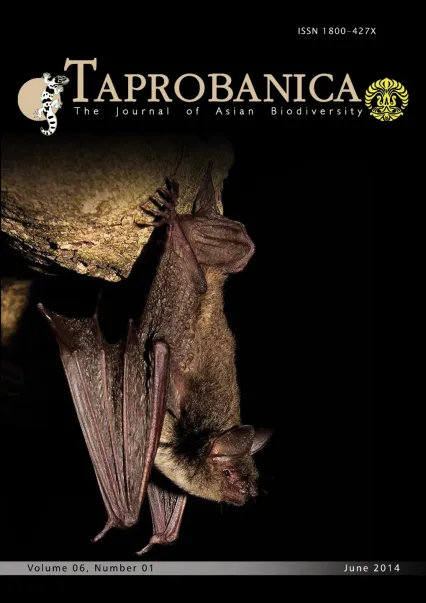

v6i1.135
Volume 6 | Number 1 | May 2014
Short Note
ISSN: 1800-427X (print)
eISSN: 1800-427X (online)
DOI:10.47605/tapro.v6i1.135
Submitted date: 30 September 2013
Accepted date: 23 April 2014
Published date: 29 June 2014
Pp. 66–67.
On the nectar feeding by the fulvous fruit bat (Rousettus leschenaulti)
W.G.M. Edirisinghe* & T.G.T. Kusuminda
*Corresponding author. E-mail: gayan.yza@gmail.com
Phytophagous or fruit bats feed primarily on fruits, seeds, and flower buds. Some fruit bats also feed on flower nectar, a habit that affects pollination and plant dispersal. As a consequence of chiropteran nectarivory many commercially important plant species are known to be pollinated. Nectar is an important source of carbohydrates and water for bats. Plant characteristics that influence pollination include time of anthesis; mode of nectar secretion; the colour, odour, morphology, position of flowers; the amount and protein content of pollen; the volume of nectar; and, the concentration of sugar.
Section Editor: Asoka Yapa
eISSN: 1800-427X (online)
DOI:10.47605/tapro.v6i1.135
Submitted date: 30 September 2013
Accepted date: 23 April 2014
Published date: 29 June 2014
Pp. 66–67.
On the nectar feeding by the fulvous fruit bat (Rousettus leschenaulti)
W.G.M. Edirisinghe* & T.G.T. Kusuminda
*Corresponding author. E-mail: gayan.yza@gmail.com
Phytophagous or fruit bats feed primarily on fruits, seeds, and flower buds. Some fruit bats also feed on flower nectar, a habit that affects pollination and plant dispersal. As a consequence of chiropteran nectarivory many commercially important plant species are known to be pollinated. Nectar is an important source of carbohydrates and water for bats. Plant characteristics that influence pollination include time of anthesis; mode of nectar secretion; the colour, odour, morphology, position of flowers; the amount and protein content of pollen; the volume of nectar; and, the concentration of sugar.
Section Editor: Asoka Yapa
- List of Articles & Contents





